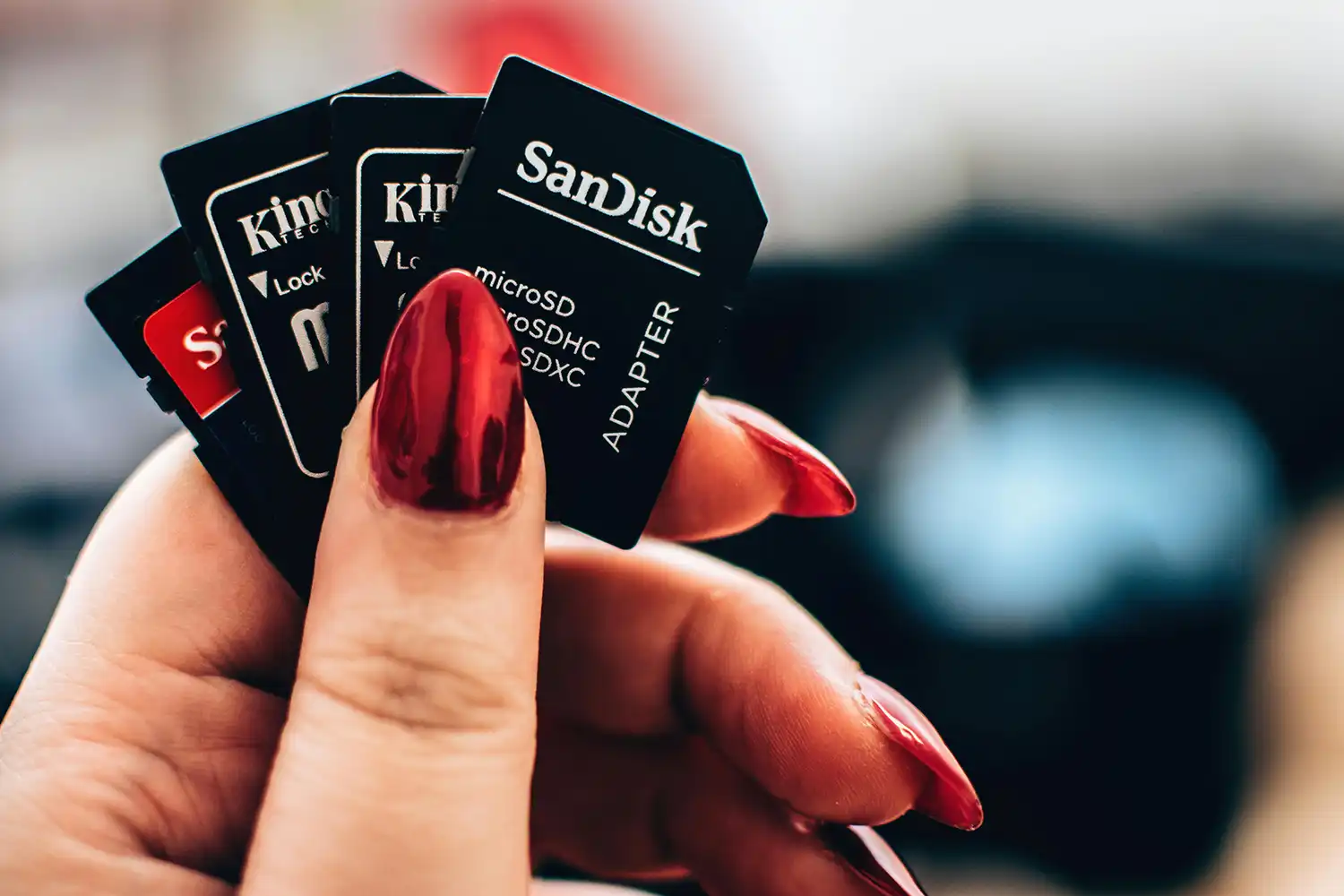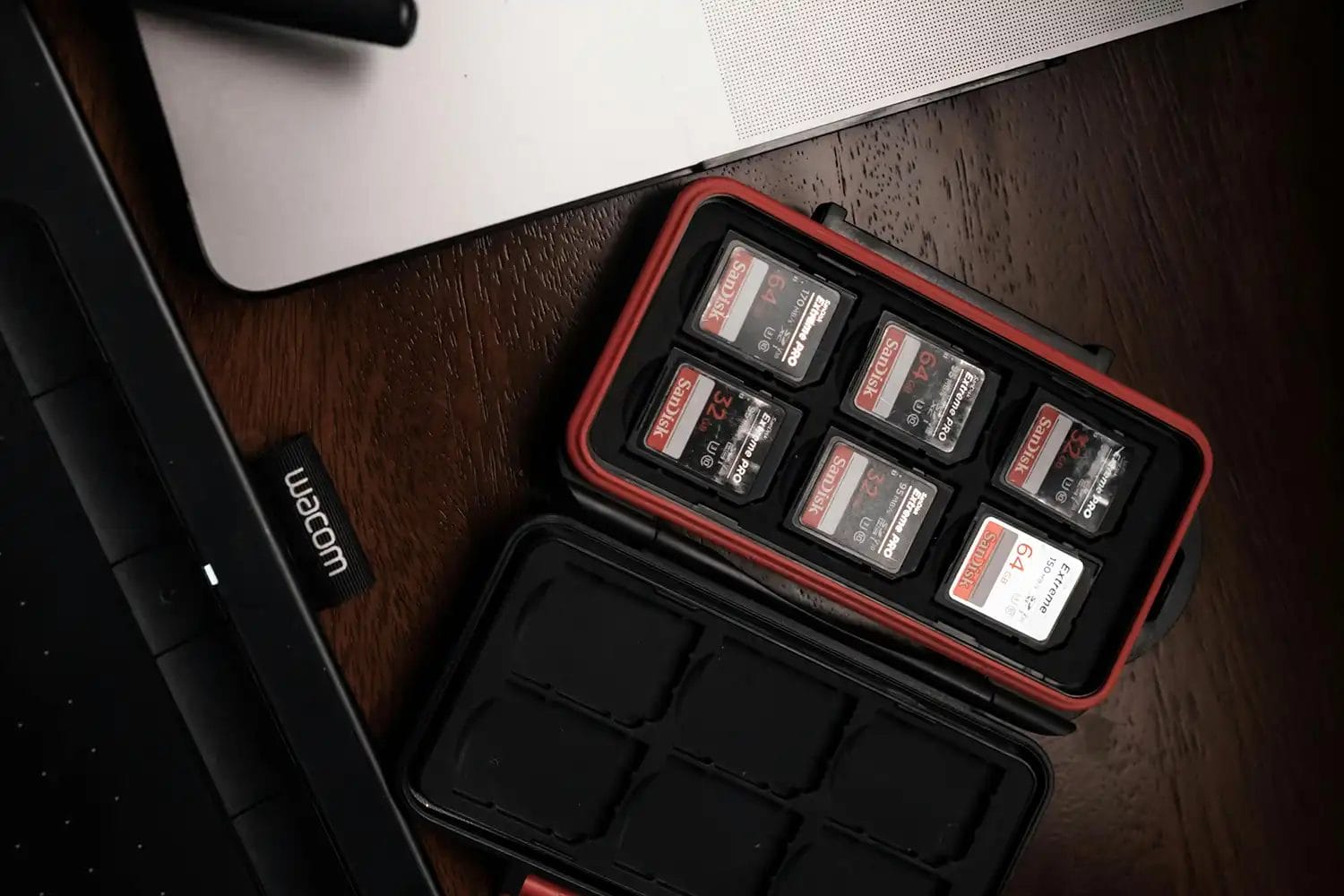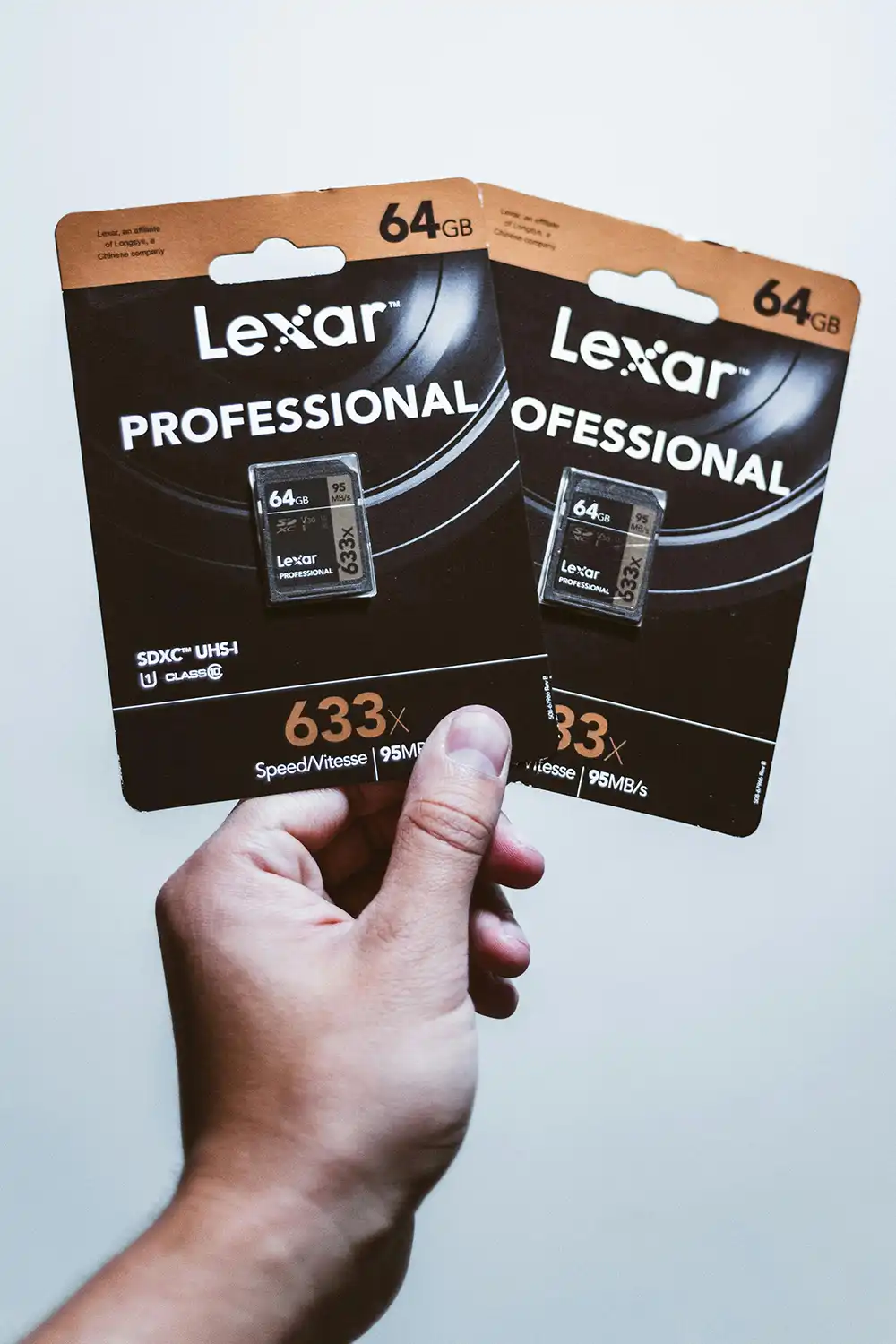As a photographer, capturing fleeting moments and transforming them into lasting memories is my passion. But just like a painter needs a canvas and a writer needs paper, photographers rely on a crucial piece of equipment: the memory card.

This seemingly small storage device plays a vital role in capturing and storing your precious photographs. However, navigating the world of memory cards can be overwhelming for beginners and seasoned professionals alike. Fear not!
This comprehensive guide will equip you with the knowledge to choose the right memory card for your photography needs, ensuring you never miss a shot.
Before diving into specifics, let’s establish a common understanding of memory cards. Memory cards are small, portable electronic storage devices used to record and store digital data, including photos and videos captured on your camera.
There are three main types of memory cards used in photography: SD (Secure Digital), CF (CompactFlash), and XQD (eXtended Quick Download).
SD cards are the most widely used and come in various sizes and capacities. CF cards are used in some professional cameras and offer higher capacities and faster speeds compared to SD cards.
XQD cards are the fastest and most expensive option, typically used by professional photographers who require the highest performance.

Most widely used and compatible with a vast array of cameras, from entry-level to high-end models. Available in various sizes: SD (standard), SDHC (High Capacity), and SDXC (eXtended Capacity), accommodating different storage needs. Come in various speed classes like Class 10, UHS-I, and UHS-II, catering to different performance requirements.
Primarily used in professional cameras and some high-end mirrorless cameras.
Offer higher capacities and potentially faster speeds compared to standard SD cards. Generally more expensive than SD cards.
Designed for the highest performance, offering blazing-fast read and write speeds. Primarily used by professional photographers who capture high-resolution images and high-frame-rate videos. Most expensive option among the three types, often reserved for specialised needs.

When choosing a memory card, two key factors to consider are capacity and speed. Capacity refers to the amount of data the card can store, measured in gigabytes (GB) or terabytes (TB).
Speed refers to the card’s ability to read and write data, often represented by “speed class” ratings (e.g., Class 10, UHS-I, UHS-II) or “transfer rates” (e.g., MB/s).
Generally, higher capacity cards are more expensive, and higher speed cards are better suited for fast-burst shooting, recording high-resolution videos, or using high-megapixel cameras.
Now that you understand the basics, let’s explore how to choose the right memory card. The first step is to ensure the memory card you choose is compatible with your camera. Consult your camera’s manual or manufacturer’s website to confirm supported card types and capacities.
Determine the Required Capacity: This depends on your shooting style and file sizes. Here’s a general guideline that I like to follow…
For occasional shots at lower resolutions, 8GB-16GB cards may suffice. For frequent photography with moderate resolution images, 32GB-64GB cards offer a good balance.
For high-resolution photos and occasional burst shooting, consider 128GB-256GB cards. Professionals capturing high-resolution images and high-frame-rate videos might require 512GB or even 1TB cards.
I would opt for reputable brands known for high-quality memory cards to ensure data reliability and longevity. Consider cards built with water and dust resistance for added protection, especially if you shoot in challenging environments. Look for cards with a decent warranty period to offer peace of mind in case of any malfunctions.

Carrying multiple cards is a wise practice, especially when shooting important events or in remote locations. If one card fails, you won’t lose all your shots.
Regularly format your cards using your camera to maintain optimal performance and prevent errors. Regardless of your memory card choices, always back up your photos to a separate storage device, like a hard drive or cloud storage, to ensure long-term data security.
By understanding these guidelines and carefully considering your specific needs, you’ll be well-equipped to choose the perfect memory card that empowers you to capture stunning photographs and preserve your precious memories. Now, go out there and create!
SanDisk: Renowned for its extensive memory card offerings, catering to various needs and budgets. Known for durability and reliability.
Lexar: Offers high-quality memory cards at competitive prices, popular among enthusiast photographers.
Samsung: Provides a good balance between performance, price, and reliability, suitable for both casual and enthusiast photographers.
Sony: Offers high-performance memory cards, particularly their G-Series targeted towards professional photographers.
ProGrade Digital: A rising star in the memory card market, known for innovative designs and high-end performance cards.

Remember, these are just a few suggestions, and the best choice ultimately depends on your specific camera model, shooting style, and budget. By understanding the types, brands, and key considerations, you’ll be well-equipped to choose the perfect memory card for your photography journey!

(iPhotography may make small commissions from links in this article.)
Photographers elevate your photo editing with Adobe Photoshop Express, a beginner’s guide for spectacular results.
Find everything you need to know in this guide to polarizer lens filters for photography. How do they work and which is the best to buy?
Discover TOP features in the Lightroom CC mobile app with this guide for enhancing your photo editing skills. For desktop and tablet too.
Learn the basics of photography – fast – with our FREE 60-Second Photographer online course. Each class is short and sharp with simple, actionable steps that give you immediate results.
x 30 lessons

© iPhotography™
Become a confident and competent photographer in less than 30 minutes!
Before you leave, make sure you’ve secured your FREE online photography course (worth £29.99)
Each class is just 60-seconds or less making it the fastest and easiest way to learn photography!